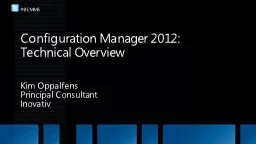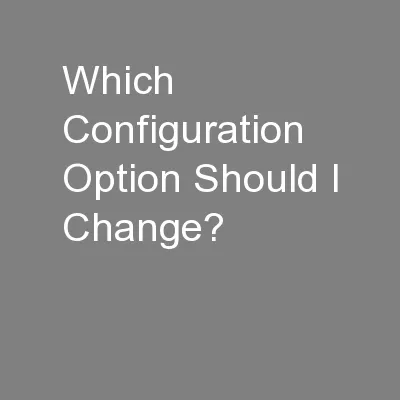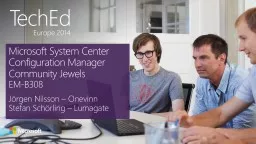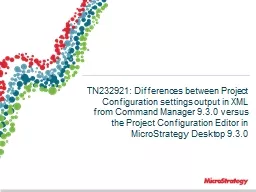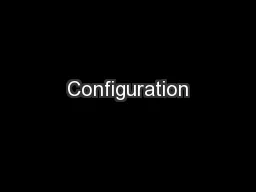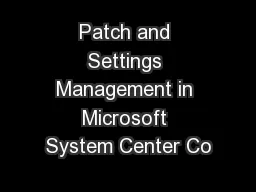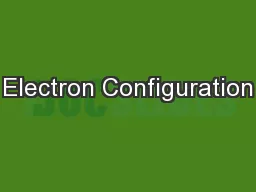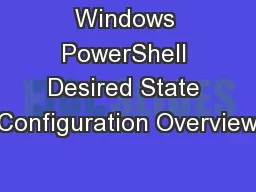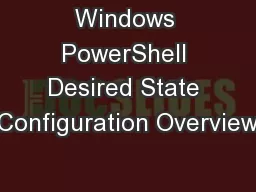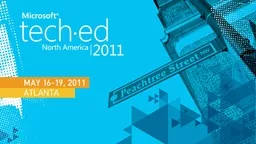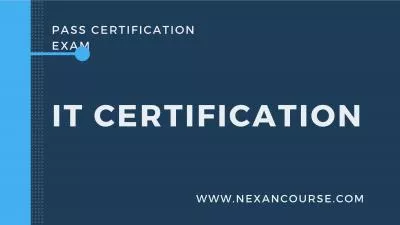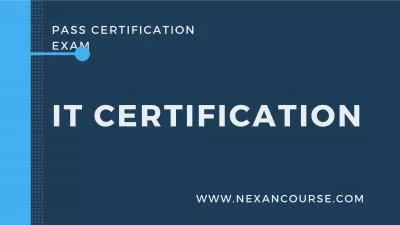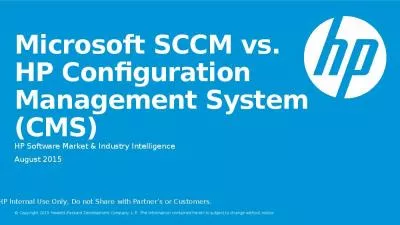PPT-Configuration Manager 2012:
Author : min-jolicoeur | Published Date : 2015-10-11
Technical Overview Kim Oppalfens Principal Consultant Inovativ Session Takeaways Review the major themes for ConfigMgr 2012 Migration from ConfigMgr 2007 to ConfigMgr
Presentation Embed Code
Download Presentation
Download Presentation The PPT/PDF document "Configuration Manager 2012:" is the property of its rightful owner. Permission is granted to download and print the materials on this website for personal, non-commercial use only, and to display it on your personal computer provided you do not modify the materials and that you retain all copyright notices contained in the materials. By downloading content from our website, you accept the terms of this agreement.
Configuration Manager 2012:: Transcript
Technical Overview Kim Oppalfens Principal Consultant Inovativ Session Takeaways Review the major themes for ConfigMgr 2012 Migration from ConfigMgr 2007 to ConfigMgr 2012 Steps to prepare now. Jeffrey Snover @. jsnover. Microsoft Distinguished Engineer. Desired State Configuration and . Windows. the Cloud. Jeffrey Snover @. jsnover. Microsoft Distinguished Engineer. Acknowledgements. Why PowerShell Desired . Sai. Zhang. , Michael D. Ernst. University of Washington. Presented. by: . Kıvanç. . Muşlu. 2. Developers. Users. I have released. . a. . new software version. …. I . cannot . get used to the UI. EM-B308. Jörgen. Nilsson – . Onevinn. Stefan . Schörling. – . Lumagate. Who we are. Jörgen Nilsson. Onevinn. @ccmexec. www.ccmexec.com. Stefan Schörling. Lumagate. @stefanschorling. www.cmtrace.com. Karan Daftary. Cindy Xing. ConfigMgr for Mac. Supported Features . include. :. Secure over-the-air (OTA) . enrollment. Active Directory (AD) & Network Discovery. Hardware Inventory. Settings Management. The following slide . d. etails output by Command Manager 9.3.0 that . do not. appear in MicroStrategy Desktop 9.3.0 project configuration settings.. Outline used in Command Manager 9.3.0:. LIST ALL PROPERTIES FOR PROJECT CONFIGURATION IN PROJECT "MicroStrategy Tutorial";. Examples. & Mass . Customization. by . Christian Bentzen. Sales & Project Director . | . SolutionSpace. Example. of . Complex. . Configurable. Item: . Cyclone. Air . Filter. Different. Configuration for . Wally Mead. Senior Program Manager. Microsoft Corporation. Mark Florida. Principal Program Manager Lead. Microsoft Corporation. MGT318. Agenda. Overview of the security features in . Configuration Manager 2012. cont’d. Ms. McGrath . Chemistry 11. Aufbau. . principle. States that in going from a hydrogen atom to a larger atom, you add protons to the nucleus and electrons to orbitals . You start at the orbitals having the lowest energy level and fill them, in order of increasing energy, until you run out of electrons. Windows PowerShell Desired State Configuration (DSC) is a new management system in Windows PowerShell that enables the deployment and management of configuration data for software services and the environment on which these services run. To use DSC, first create a . Windows PowerShell Desired State Configuration (DSC) is a new management system in Windows PowerShell that enables the deployment and management of configuration data for software services and the environment on which these services run. To use DSC, first create a . Wally Mead. Senior Program Manager. Microsoft Corporation. SIM347. Session Objectives and Takeaways. Infrastructure Promises. Modernizing Architecture. Minimizing infrastructure for remote offices. Consolidating infrastructure for primary sites. kindly visit us at www.nexancourse.com. Prepare your certification exams with real time Certification Questions & Answers verified by experienced professionals! We make your certification journey easier as we provide you learning materials to help you to pass your exams from the first try. kindly visit us at www.nexancourse.com. Prepare your certification exams with real time Certification Questions & Answers verified by experienced professionals! We make your certification journey easier as we provide you learning materials to help you to pass your exams from the first try. System (CMS). HP Software . Market & Industry Intelligence. August 2015. HP Internal Use Only, Do not Share with Partner’s or Customers.. Disclaimer and How to use this information. This information is for .
Download Rules Of Document
"Configuration Manager 2012:"The content belongs to its owner. You may download and print it for personal use, without modification, and keep all copyright notices. By downloading, you agree to these terms.
Related Documents

